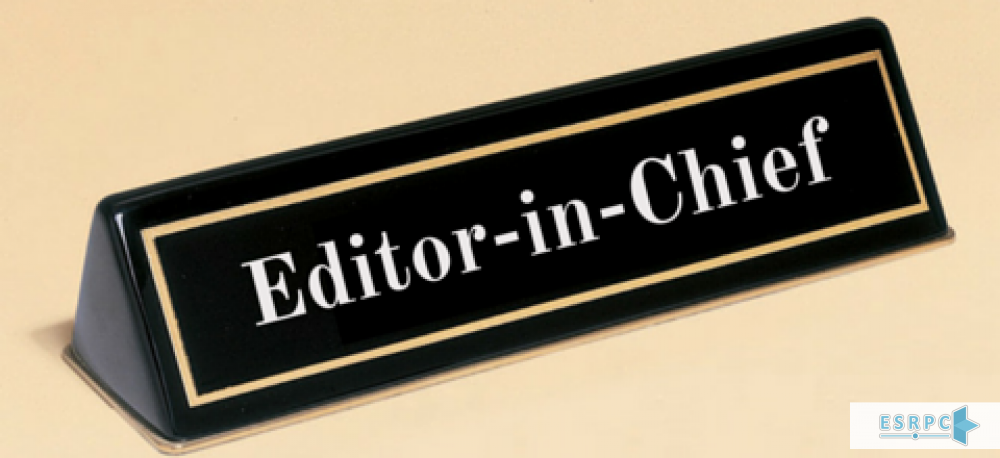The managing editor and editor in chief are different occupations having some overlapped roles.

Since most of the writers and readers are not aware of the differences between these two titles, they are sometimes mistakenly used interchangeably. But, in fact, these two jobs are different. It can be declared that the editor in chief is like an executive director of a company. While the managing editor is more like a chief operating officer. Major publishers usually have both of the positions, but smaller publishers may not have managing director in their system.
The skills required for being an editor in chief and a managing editor:
1. Being able to write and edit in an advanced level
2. Being a good listener, and having the ability to make a good relationship with other people
3. Being able to analyze the situation and involve in the process of controlling the quality
4. Being able to make good and fast decisions both in normal and critical moments
5. Having good time management and accomplishing the works on time
6. Being knowledgeable in the field of communication and media
7. Being creative and open minded
8. Being able to cope with stress and work in hard situations
9. Being able to manage human and economic resources
10. Being able to use the internet and work with the needed software
The duties of an editor in chief:
1. The editor in chief is the major editor of a publisher.
2. He/she is in a direct contact with the manager of the publication.
3. He/she is responsible for fulfilling the intentions of the board of directors and concessionaires of the publication.
4. He/she determines the direction and policy of the publication.
5. He/she is the person who specifies the general format of the journal.
6. He/she is the person who gives the final approval of the written materials.
7. He/she consistently gets reports from various parts of the publication and, through studying them identify and fulfill the needs.
8. He/she is the person who determines the general budget, and also the budgets for different parts based on their needs and requirements.
9. The editor in chief not only is in contact with the managing editor, but also contacts with the other institutes and publications.
10. In case of a problem out of the publication, it is the editor in chief’s duty to solve it.
The duties of a managing editor:
1. The managing editors have different duties in different publications, but generally speaking, they are responsible for daily routines of the publications and giving reports to the editor in chief.
2. They determine the work process, and make sure of it being accomplished on time.
3. They manage the budgets related to the employees.
4. They should manage the situations to prevent problems.
5. They set a deadline for the works and check them to be finished on time.
6. When the employees confront a problem, they refer to the managing editor.
7. They have the ability of planning and making strong relationships.
8. They specify different works to the employees liable to accomplish them.
9. They identify the importance of the materials and their layout and format.
10. They make a harmony between sample readers, major editors, and editing assistants.
11. As an important person in the publication, he or she plays a key role in hiring the employees and educating the newly employed staff.
12. They should make sure that the amount of works given to the employees is fair and handleable.
The managing editor is the first person who reads the uploaded paper in the system. He checks the paper to make sure it is in the format defined by the publication as a standard format. Therefore, he or she should be completely aware of the format and standards of the publication. The other things that a managing editor should be knowledgeable at, is the knowledge of grammar and structures. If a paper has problems in these cases, the managing editor sends it back to the authors and asks them to make some revisions. Following the process of the publication of a paper is one of the managing editor’s responsibilities.
The editor in chief and managing editor work together to fulfill the demands of the publication’s readers. The editor in chief makes big decisions, asks the managing editor to actualize them, and checks the accomplishments of the managing editor. Hiring and firing the employees are the duties of both of them, but it is the editor in chief who makes the final decision. Generally, executive actions are the responsibilities of the managing editor, while the editor in chief plays a role of a supervisor and a determiner.
Small publications may not have a managing editor, instead, they have editors in chief or major editors. The major editors supervise over the works of editors and editing assistants and sometimes edit the papers, too. The major editor accomplishes the responsibilities of both the editors in chief and managing editors. Since the publication is not so big, the editor in chief does not have as many responsibilities as the editors in chief in big publications and can accomplish the duties of both of the jobs by him/herself. And, sometimes, when the editor in chief is loaded with huge amount of works, gives some of the responsibilities to the managers of different parts and ask them for the reports showing the process of how the things are being done.
ESRPC is an official worldwide publication system which has enjoyed 8 years’ experience assisting authors to produce and distribute high-quality articles. The team is experienced in all the phases helping you select the best journal for publication of your scientific article all over the world.